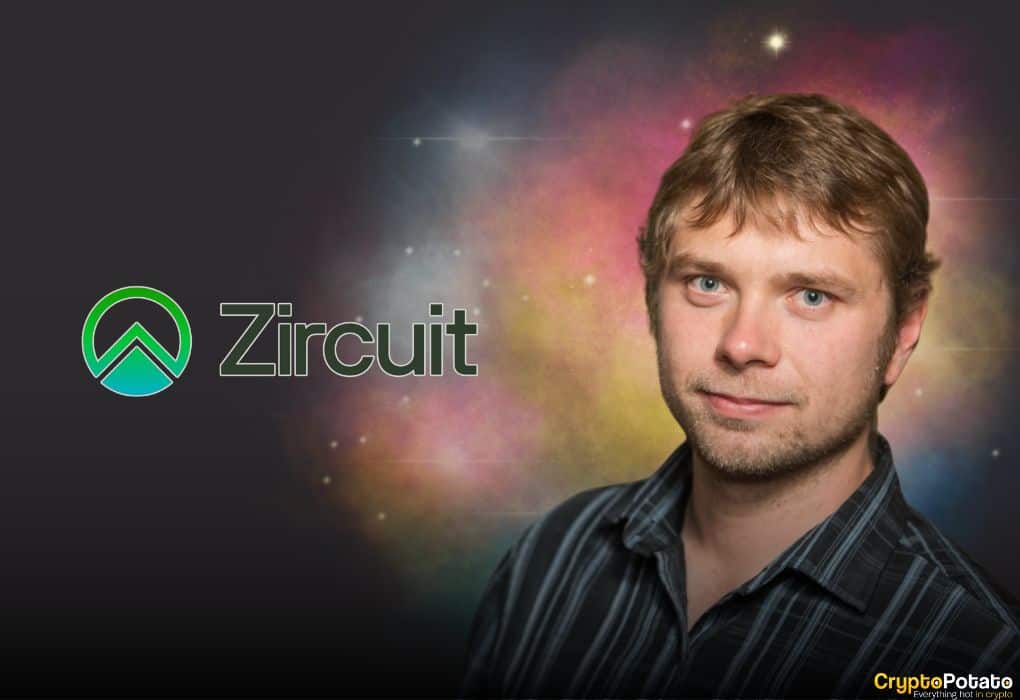In the rapidly evolving landscape of Layer 2 networks, Zircuit aims to create a new approach to security and scalability. Co-founded by Martin Derka, a seasoned professional with a PhD in algorithms and complexity, sat with us for an interview during EthCC. Derka shared insights into his journey, the founding of Zircuit including the meaning of the whooping $3 billion staked ETH to the project, and above all – the expected launch date for Zircuit’s mainnet.
Multiple well-known investors have taken part in the protocol’s mainnet funding round, including Binance Labs, Nomad Capital, AMBER, and much more.
From Soccer to Crypto
Martin Derka’s journey into the world of crypto began after an unexpected turn in his career. “I have a PhD in algorithms and complexity,” Derka explained, detailing his academic background. “For many years, I was developing software for various companies while still a student.” His transition from academia to entrepreneurship was marked by a stint as CTO of a startup focused on car advertisement photography, which he co-founded in 2013. However, after internal disputes led to his departure in 2017, Derka sought new opportunities, eventually finding his way to the crypto sphere.
“After leaving the startup, I went to clear my head in Argentina and Chile,” Derka recounted. “Upon returning to Canada, I connected with Leo (Leonardo Passos, Ph.D), a former soccer buddy and one of the veteran employees of the crypto auditing giant Quantstamp.” This serendipitous meeting led to Derka joining Quantstamp as one of its earliest hires in 2018, where he delved deep into crypto security.
The Birth of Zircuit
Derka’s tenure at Quantstamp laid the groundwork for Zircuit. “At Quantstamp, we knew rollups would be key to scaling Ethereum,” Derka noted. This realization sparked intensive research into rollups, eventually leading to the inception of Zircuit. “We saw an amazing opportunity to enhance blockchain security proactively,” Derka said. “This is how the feature that now distinguishes Zircuit—sequencer level security—began.”
‘Many Uses of AI Seem Fabricated’
Zircuit’s most striking feature is its AI-driven security mechanism, sequencer-level security, a concept Derka elaborated on extensively.
“Our sequencer evaluates each transaction for malicious intent before inclusion in the block,” Derka explained. “We use AI to simulate transactions and assess their impact, determining if they’re hacks.” This proactive approach allows Zircuit to quarantine potentially harmful transactions, enhancing the overall security of the blockchain.
The sequencer is a privileged node designed to collect user transactions and order them based on predefined rules. In essence, once the transaction arrives at the sequencer, it is then routed to the “Malice Detection” module – something that the team refers to as the “oracle.” It’s designed to determine whether a transaction is benign or it can potentially be malicious. Those that are benign are queued for block inclusion, while those that are flagged are diverted to another module called “Quarantine-Release Criterion” module. It acts as a holding area for the time during which these transactions undergo a rigorous verification process.
The following can be seen in the overview presented by Zircuit:
When asked about the prevalent AI hype, Derka acknowledged the phenomenon but remained pragmatic. “There is a huge level of hype,” he admitted. “Many uses of AI seem fabricated, and AI can be highly inaccurate. But failure is part of innovation. If we don’t try applying AI in all possible areas, we might miss its true potential.”
L2’s: Do We Really Need That Many
Zircuit positions itself as a Layer 2 (L2) solution with a strong emphasis on security, amidst a crowded field of competitors. Derka was clear about the inevitability of multiple L2 solutions. “If we didn’t build another L2, someone else would,” he said. “The better question is why users should choose Zircuit over others, and that comes down to our unique security proposition.”
Despite the competitive market, Derka does not foresee a winner-takes-all scenario.
“Technologists love to build and compete,” he asserted. “There will always be new players challenging the status quo.”
Zircuit: When Mainnet Launch
Zircuit’s immediate focus is on launching its Mainnet, with significant milestones already achieved. “We launched our Testnet last year, which has been very stable,” Derka shared. “We are now in the process of deploying Mainnet, integrating partners, and ensuring security measures are in place.”
The Mainnet Phase 1 launch is scheduled for Augustmid-July in a gated mode, with a broader public launch expected soon afterin mid-August. “We are also working on optimizing zero-knowledge proof generation to reduce operating costs and improve efficiency,” Derka added. This technical enhancement is crucial for the blockchain’s functionality and user experience.
Over $3 Billion in Staked ETH
Derka is mindful of the challenges in sustaining Zircuit’s initial success: With over $3 billion in restaked Ether (at its peak) signaling strong interest, the true test will be retaining these funds post-launch. “It’s the best signal we currently have, but it’s not a guarantee of success,” Derka cautioned. “Our task is to support projects deploying on Zircuit, ensuring they attract and retain capital.”
Zircuit aims to create a robust ecosystem encompassing all essential blockchain functions. “We want a fully functional ecosystem comparable to other chains, with lending protocols, oracles, DEXs, and stablecoins,” Derka explained. The security aspect remains a key differentiator, offering users and developers a more secure environment for their projects.
